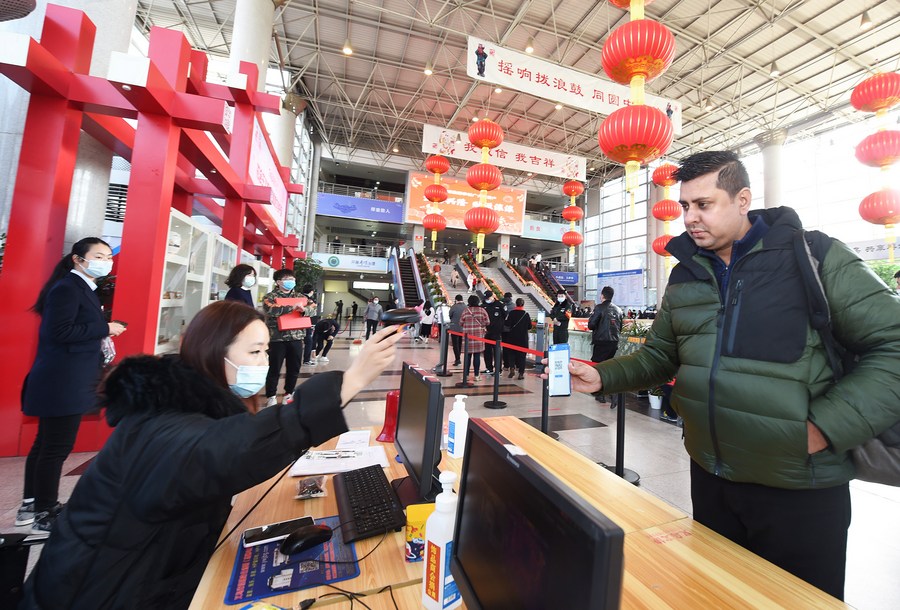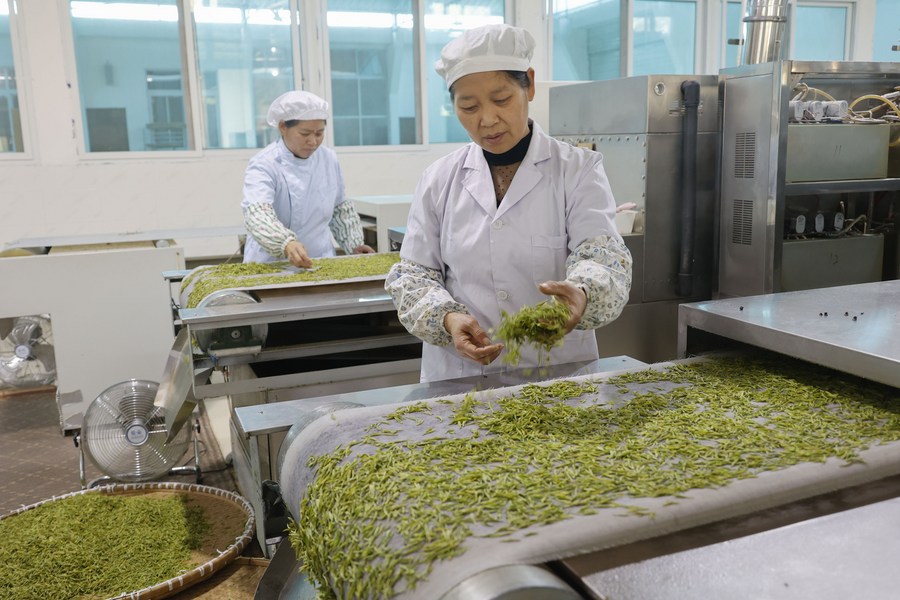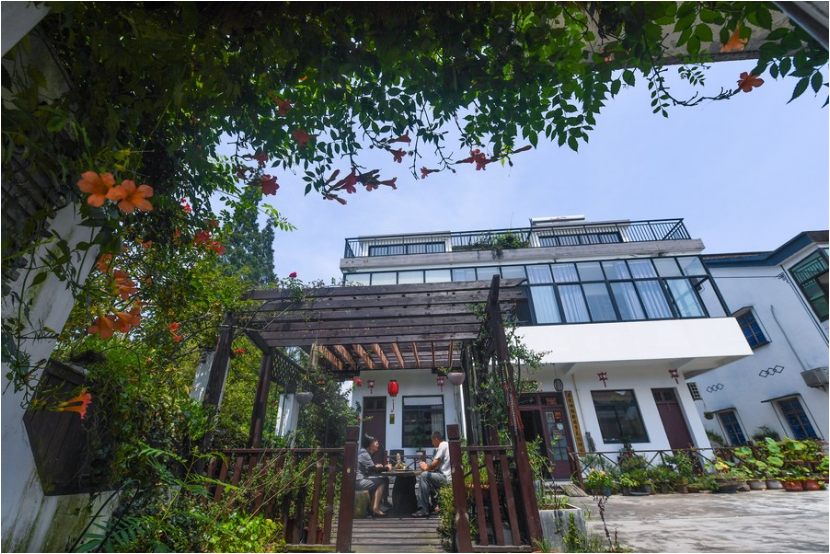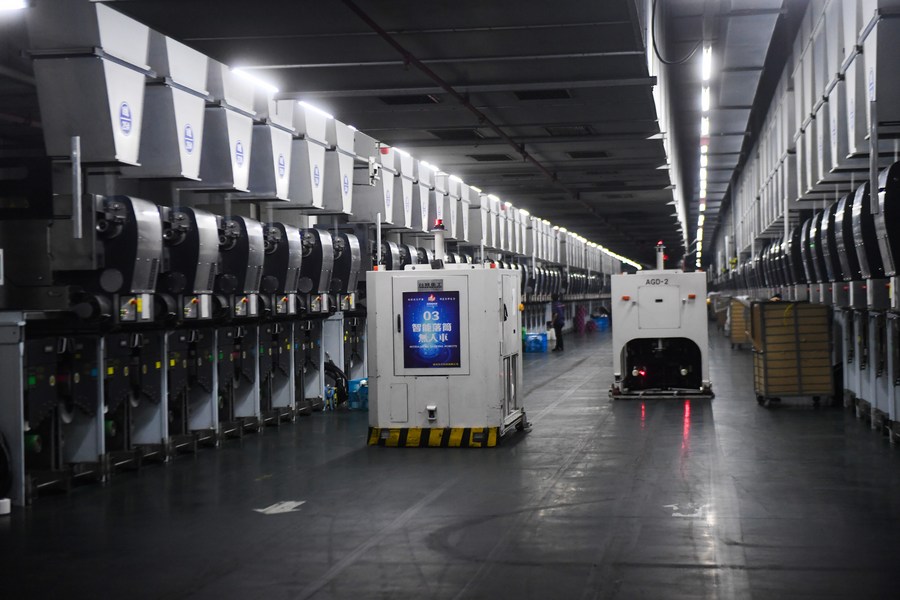Why China stresses common prosperity
-- In China's journey toward its second centenary goal, a future where everyone shares prosperity is envisioned.
-- Innovation is expected to play a vital role in the pursuit of common prosperity.
-- China plans to make basic institutional arrangements on income distribution, expand the size of the middle-income group and adjust excessive incomes to promote social fairness and justice.
HANGZHOU, Oct. 7 (Xinhua) -- In China's journey toward its second centenary goal, a future where everyone shares prosperity is envisioned. There is, however, neither any ready-made experience, nor any textbook for the country to follow.
WHY COMMON PROSPERITY COUNTS
Common prosperity refers to affluence shared by everyone both in material and cultural terms. In particular, it emphasizes that such prosperity does not cover only a few people or parts of the country.
Rather than being egalitarian at the expense of efficiency, common prosperity should be attained through hard work and innovation, with chances for more people to become wealthy.

A foreign merchant shows his QR code at the Yiwu International Trade Market in Yiwu City, east China's Zhejiang Province, Feb. 20, 2021. (Photo by Gong Xianming/Xinhua)
Since the 18th National Congress of the Communist Party of China in 2012, the country has gradually put common prosperity in a more prominent position. Now, with victory in the anti-poverty fight and in the building of a moderately prosperous society in all respects, China has favorable conditions for promoting common prosperity.
The goal is also vital to improving people's well-being. As China marches toward its second centenary goal, the focus of promoting people's well-being entails boosting common prosperity.
"Common prosperity is not only a concept of social development, but also a social change marked by the narrowing of the gap between regions, urban and rural areas, and in people's incomes," said Yuan Jiajun, Party secretary of Zhejiang Province.
Realizing that the quest for common prosperity will be a long-term, arduous and complicated task, the country has decided to pursue it in a gradual and progressive manner, which includes supporting one region to generate replicable practices and models.
Zhejiang, an economic powerhouse in east China, has been designated as such a demonstration zone for promoting common prosperity.
WHY ZHEJIANG
The per capita disposable income of urban residents in Zhejiang has ranked first among all provincial-level regions for 20 consecutive years, and 36 consecutive years for rural residents.

Staff members process tea leaves at a workshop in Jingning She Autonomous County in Lishui, east China's Zhejiang Province, March 23, 2021. (Photo by Li Suren/Xinhua)
Zhejiang launched the "Shanhai Xiezuo" project, namely cooperation between coastal and mountainous regions, in 2002, using the advantage of developed coastal regions to help the underdeveloped mountainous areas. It is one way to reduce the regional gap and promote coordinated urban and rural development.
Lai Lianfeng from Pushan Village witnessed how her hometown donned a new look over the past decade, as investment and projects were brought in by Xiaoshan District of the provincial capital Hangzhou to improve public infrastructure and support rural industries.
Lai started the agritainment business in 2019 by renting out her farmhouse, which brought her an annual income of 26,000 yuan (about 4,000 U.S. dollars).

People enjoy themselves at a homestay in Xincang Village of Haining City in Jiaxing, east China's Zhejiang Province, Aug. 26, 2021. (Xinhua/Xu Yu)
Benefiting from these supportive policies, many villagers managed to maintain a stable financial income at home instead of having to eke out a living elsewhere.
As a key indicator of balanced development, the income ratio between urban and rural residents in Zhejiang fell to 1.96:1 last year, much lower than the national level.
"Zhejiang's exploration of paths to common prosperity amid high-quality development is conducive to setting an example nationwide," said Liu Yuanchun, vice president of the Renmin University of China.
SUSTAINED INNOVATION
Innovation is expected to play a vital role in the pursuit of common prosperity.
As a leading player embracing the digital economy, Zhejiang has set an example in innovative development, which perfectly echoes the prerequisite of common prosperity -- to make a pie bigger through high-quality development.

A staff worker sells children's clothes via livestreaming in Zhili Town of Huzhou, east China's Zhejiang Province, Feb. 8, 2021. (Xinhua/Xu Yu)
In 2020, the added value of Zhejiang's digital economy reached 3.02 trillion yuan, accounting for 46.8 percent of its gross domestic product (GDP).
Traditional industries in the province are also taking the lead to actively upgrade themselves as China continues to push for economic transformation.
Hangzhou Wahaha Group, a leading domestic beverage enterprise founded in 1987, is focusing on smart manufacturing and more high value-added products, as well as combining the online and offline channels to upgrade its marketing model.
"We use the digital economy to empower the real economy so as to improve the work efficiency and economic benefits of the real economy," said Zong Qinghou, the company chairman.
"Digital economy has become an important growth driver in Zhejiang's efforts of building a demonstration zone for promoting common prosperity," said Yu Jianxing, president of Zhejiang Gongshang University.

A 5G intelligent robot delivers textile products at a workshop of Xinfengming Group in Huzhou City, east China's Zhejiang Province, March 30, 2021. (Xinhua/Xu Yu)
Digital technology has also empowered poverty reduction, public service and grassroots governance, playing a vital role in improving people's livelihood. All of these experiences can be replicated and promoted in a wider range across the country.
Zhejiang is forging ahead to foster a market-oriented, law-based and internationalized business environment by relying on digital governance.
A guideline on promoting common prosperity issued in June further lit the path for Zhejiang. According to the guideline, the province will strive to achieve common prosperity by 2035, with its per capita GDP and residential income reaching the level in developed countries.
Authorities at all levels across the country are also mulling new initiatives to further boost development after China, the world's most populous country, bid farewell to absolute poverty and stepped into a moderately prosperous society in all respects.

Aerial photo taken on June 1, 2021 shows a farmer driving a transplant truck in a field in Yushan Township, Hangzhou, capital of east China's Zhejiang Province. (Xinhua/Xu Yu)
It vows to establish a scientific public policy system and a reasonable distribution system that benefits everyone. Focus will be put on primary and inclusive projects that facilitate people's well-being and guarantee their basic needs.
China also plans to make basic institutional arrangements on income distribution, expand the size of the middle-income group and adjust excessive incomes to promote social fairness and justice.
Other planned measures include protecting property rights and intellectual property rights, the healthy development of different types of capital, and the advancement of common prosperity among farmers and in rural areas.
(Reporting by Wang Siyuan, Fang Lie, Wei Donghua, Wang Junlu, Xu Shunda, Huang Xiao, Ma Yujie; Video reporters: Wang Yiwen, Li Tao; Video editors: Yang Zhixiang, Zhu Jianhui)